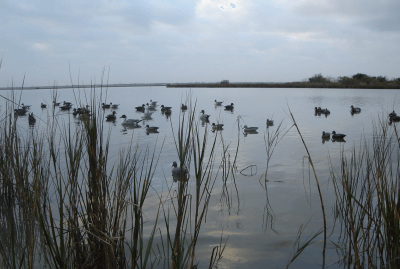- Home
- About
- Blog
- For Parents
-
Corners
- Allison’s Corner
- Amber’s Category
- Andrea’s Corner
- Ashley’s Corner
- Brandi Jo’s Corner
- Brittany’s Corner
- Brooke’s Corner
- Catrina’s Corner
- Conservation
- Desiree’s Corner
- Emily’s Corner
- Erica’s Corner
- Erin’s Corner
- Heather’s Corner
- Ivory’s Corner
- Jeana’s Corner
- Katie’s Corner
- Kelly’s Corner
- Kelsey’s Corner
- Kendra’s Corner
- Liberty’s Corner
- Lisa’s Corner
- Meagan’s Corner
- Melissa’s Corner
- Mimi’s Corner
- Morgan’s Corner
- Nicole’s Corner
- Sarah’s Corner
- Savannah’s Corner
- Shannon’s Blog
- Sharon’s Corner
- Sherri’s Corner
- Tara’s Corner
- Contact
- Guest Post

A Nice Spread
I have been collecting duck decoys for years. I like the old vintage hand made wooden ones. I have a great appreciation for the hand painted detailed carved decoys because I am an artist and know what it takes to make such pieces. Duck decoys can be used for more than just hunting aids, they make for good decor pieces as well. Detailed and old painted decoys are a nice added character to any room. From the kitchen cabinets to end tables, a duck adds a little bit of outdoor feel to your home. Duck decoys have come a long way since the days of the wooden hand carved ones I collect. When it comes to using them for duck hunting the options these days are very wide. From weight rigging to moving mojo style ducks, there are a variety of choices for duck hunters now.
…
…
When it comes to using duck decoys one is better than none. It really is the hunters preference and depends on other factors as to what works best. You can use anywhere from four dozen to ten dozen. Just remember the more decoys you use the earlier you have to be there to set them out because it takes longer to set up. I like to use big decoy spreads when hunting open water blinds and some island spots. In my big open water spread I use mixed breads and like to group them somewhat together intertwining a few different types of ducks. I usually make sure my decoys I use in these open waters in the flats are well weighted because of the strong currents you some times get out there. You don’t want the decoys getting away from your hunting spot.
…
…
Remember to leave openings in your decoy spread where you want the ducks to fly in and land. I like to think of the opening as my duck funnel, and I arrange the decoys in a way that leaves a good open spot that is easily excisable to the ducks and in range of the shot guns. You don’t want to over clutter your spread because the ducks will have no choice but to land outside your decoys out of your shooting range. I always make sure there is an opening for the ducks to land. This is less of a concern when hunting smaller ponds.
…
…
In a small pond scenario I use less decoys and stick to fewer but more realistic detailed ones. You also might need to reduce the amount and up the quality of the decoys later in duck season. In South Texas I have noticed later in the season ducks get gun and decoy shy. Sometimes by the end of the season they have had so many hunters after them its like the ducks become leery and almost on to us hunting them. Fewer decoys sometimes help this problem. You can also use the moving battery operated mojo type decoys during this time, or even a nice confidence decoy of a Heron bird.
…
…
This is just what has worked for me in certain hunting scenarios in South Texas. They are a few helpful suggestions of things I do when duck hunting here. In other areas this way of using decoys may be less effective. It really is up to the hunter because several different decoy groupings may work for one area. Just go out there and try a set up and if doesn’t seem to be working for you change it. If ducks are not committing to land in your decoy spread change it up. Eventually you’ll find what works for your particular spots and birds.
Jan 23, 2013 | Category: Blog | Comments: none

Leave a Reply